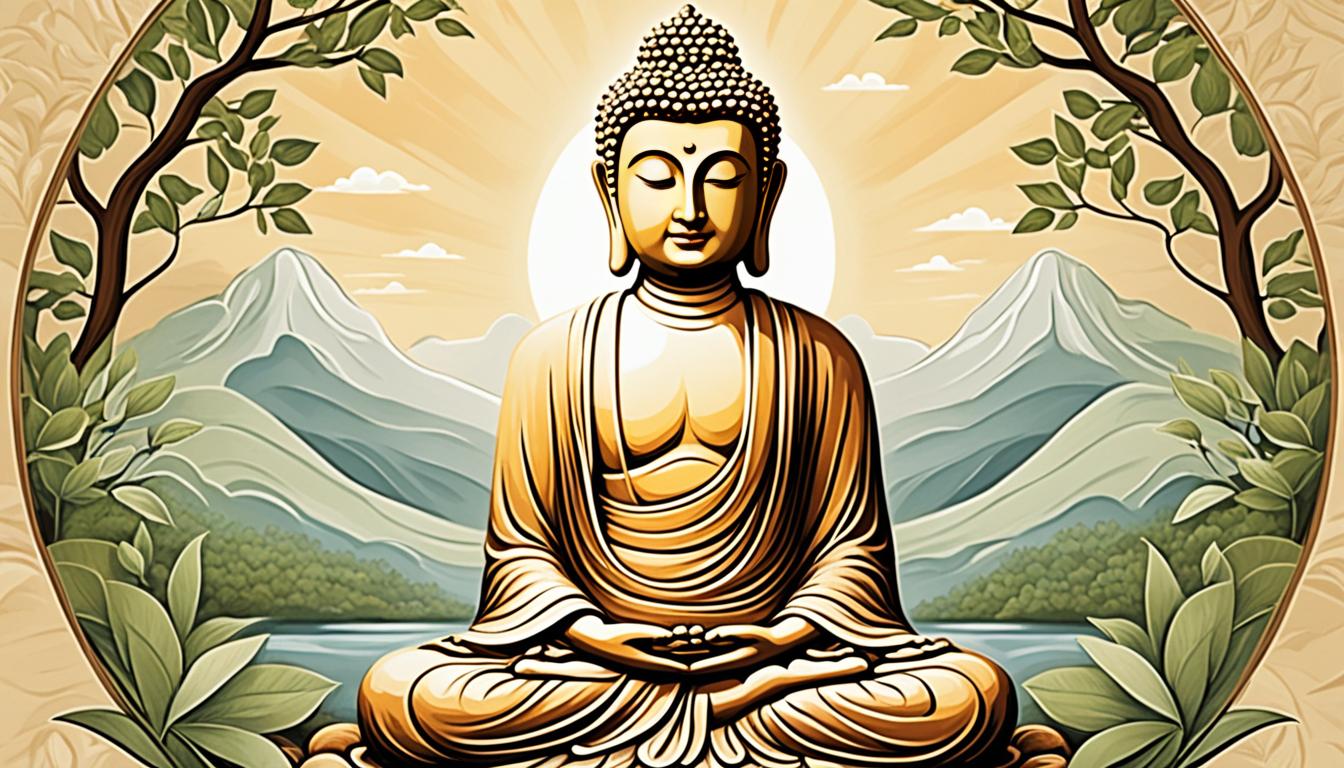Have you ever wanted to capture the essence of Zen in a simple drawing? Now you can, with our step-by-step guide to creating an easy and beautiful Buddha sketch. Whether you’re a beginner or an experienced artist, this guide will show you how to bring the peaceful and serene presence of Buddha to life on paper.
Many people think that drawing Buddha requires advanced artistic skills or intricate techniques. But what if we told you that creating a simple and captivating Buddha drawing is within your reach? Whether you’re looking to enhance your artistic abilities or simply want to express your creativity, this guide will help you discover the joy of bringing Buddha to life on paper.
Ready to embark on a serene artistic journey? Let’s dive in and learn how to create a Buddha drawing easy, through simple steps that will unleash your creativity and help you embrace the Zen-like qualities of Buddhist art.
Key Takeaways:
- Create a beautiful and peaceful depiction of Buddha with our step-by-step guide.
- Even beginners can learn how to draw a simple Buddha sketch.
- Explore techniques for effortless Buddha sketching.
- Discover the beauty and simplicity of Zen art as a source of inspiration for your drawings.
- Explore the impact of Buddhism on personal and societal harmony.
Step-by-Step Guide to Drawing Buddha
Follow our step-by-step instructions to learn how to draw Buddha in a simple and beginner-friendly way. Whether you’re an aspiring artist or just starting on your creative journey, this quick buddha drawing guide is perfect for you. Let’s get started!
Step 1: Sketching the Outline
Begin by sketching the outline of a seated Buddha figure. Pay attention to capturing the posture and proportions. Remember to keep the lines light and loose, as we will be refining them later. Don’t worry about perfection; this is a beginner buddha art tutorial, and we encourage you to embrace the imperfections and uniqueness of your drawing.
Step 2: Adding Facial Features
Once you have the outline, it’s time to add the facial features that give Buddha his serene expression. Draw closed eyes with a slight smile, symbolizing inner peace. Emphasize the elongated earlobes, representing wisdom and enlightenment. Take your time and be patient with each stroke, feeling the tranquility flow through you as you bring the essence of Buddha to life on paper.
Step 3: Focusing on the Robe and Accessories
Now, shift your attention to the intricate details of Buddha’s robe and accessories. Use careful strokes to outline the folds and drapes, creating a sense of depth and movement. Add any desired accessories, such as prayer beads or a lotus flower. These elements add symbolism and enhance the overall composition of your drawing.
Step 4: Bringing Your Drawing to Life
Once the main elements are in place, it’s time to add shading and highlights to bring your drawing to life. Use a soft pencil or shading tool to create shadows and depth on the Buddha figure and the surrounding elements. With each stroke, focus on creating a sense of three-dimensionality, capturing the play of light and shadow. Be mindful of the areas that would catch highlights, such as the forehead or the edges of the robe. These highlights will add realism and make your drawing stand out.
With these simple steps, you have now completed your very own Buddha drawing! Take a moment to admire your work and appreciate the serenity and wisdom that emanates from your artwork.
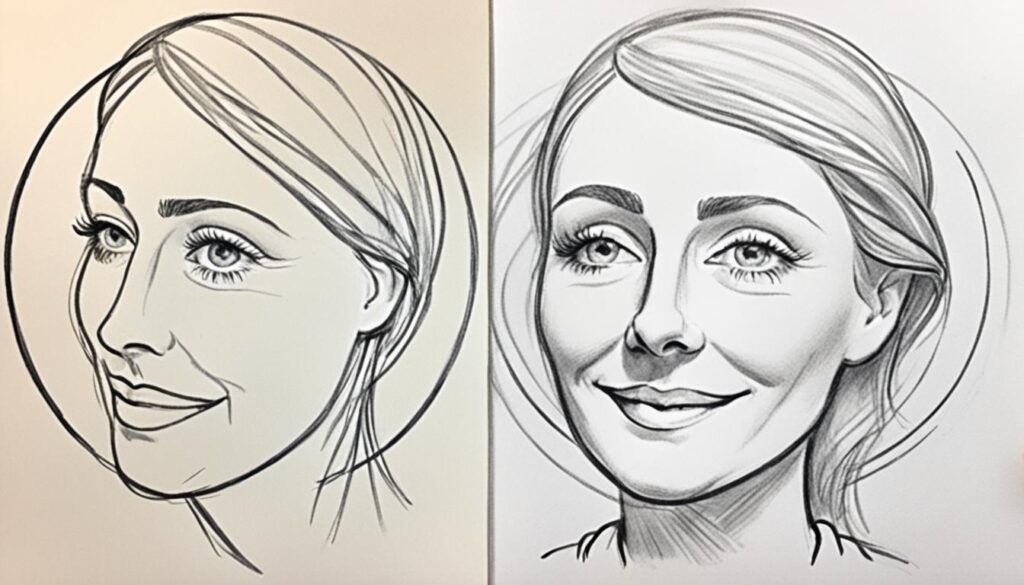
| Benefits of Step-by-Step Drawing | Tips for Beginner Artists |
|---|---|
|
|
Now that you have learned how to draw Buddha step by step, continue honing your skills and exploring the world of Buddhist art. Remember, each stroke is an opportunity to express your creativity and connect with the essence of Zen. Enjoy your journey as you create beautiful works of art inspired by the wisdom and serenity of Buddha.
Techniques for Effortless Buddha Sketching
Master the art of effortless Buddha sketching with these helpful techniques. Whether you’re a beginner or have some artistic experience, these tips will guide you in creating stunning Buddha artwork.
1. Practice Basic Shapes and Proportions
Start by familiarizing yourself with the basic shapes that make up Buddha’s iconic silhouette. Observe the proportions of the head, body, and limbs. By mastering these foundations, you’ll be able to accurately depict the peaceful and serene posture of Buddha.
2. Experiment with Line Weights and Strokes
Line weight and stroke variation can add depth, dimension, and character to your Buddha sketches. Try using different types of strokes, such as bold lines for outlines and delicate lines for details. Play around with thin and thick lines to accentuate specific features and create visual interest.
3. Explore Shading and Hatching Techniques
Shading and hatching techniques can bring your Buddha sketches to life by creating texture, contrast, and a sense of three-dimensionality. Experiment with cross-hatching, stippling, or blending techniques to achieve different effects. Use shading to emphasize light and shadow, adding depth and realism to your artwork.
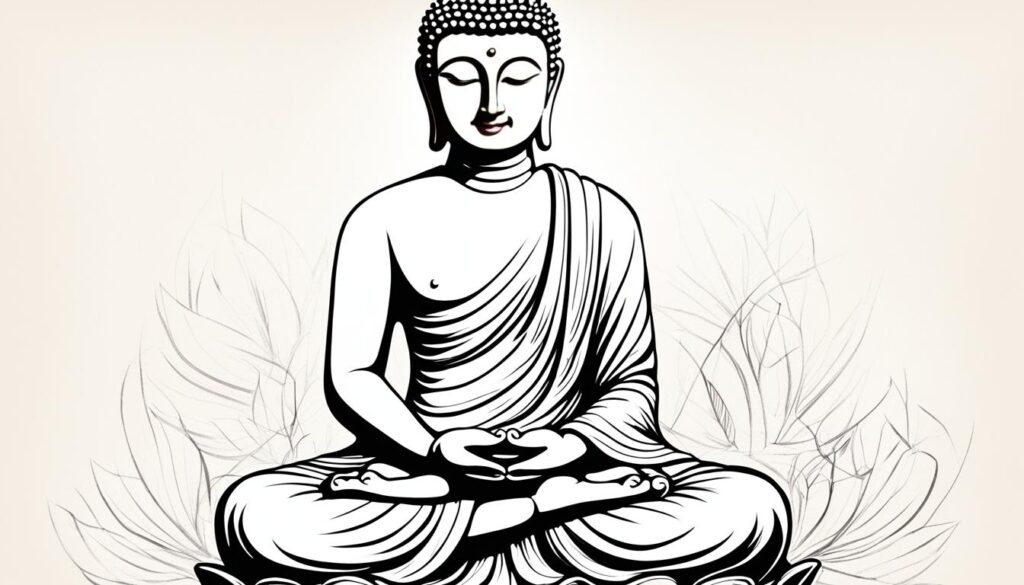
4. Incorporate Symbolic Elements
Buddha’s iconography is rich with symbolism. Consider adding symbolic elements, such as the lotus flower, Bodhi tree, or Dharma wheel, to enhance the meaning and symbolism behind your Buddha sketches. These elements can help convey the teachings and spiritual significance associated with Buddha.
5. Find Inspiration from Other Artists
Take inspiration from renowned artists who have created magnificent Buddha artwork. Study their techniques, composition, and use of colors to further enhance your own artistic style. Analyzing different interpretations can broaden your artistic horizons and inspire new ideas.
6. Practice Regularly and Enjoy the Process
Creating Buddha artwork is a journey of self-expression and self-discovery. Set aside regular practice time to refine your skills and explore new techniques. Remember to enjoy the creative process and let your artistic intuition guide you. Each sketch is an opportunity to connect with the peaceful essence of Buddha.
| Technique | Description |
|---|---|
| Practice Basic Shapes and Proportions | Familiarize yourself with the fundamental shapes and proportions that capture Buddha’s silhouette. |
| Experiment with Line Weights and Strokes | Explore different line weights and strokes to add depth and dimension to your sketches. |
| Explore Shading and Hatching Techniques | Master shading and hatching techniques to create texture and contrast in your Buddha sketches. |
| Incorporate Symbolic Elements | Add symbolic elements, such as lotus flowers or Dharma wheels, to infuse deeper meaning into your artwork. |
| Find Inspiration from Other Artists | Study the work of other artists to gain inspiration and broaden your artistic horizons. |
| Practice Regularly and Enjoy the Process | Make sketching a regular practice and find joy in the creative process of bringing Buddha to life on paper. |
Finding Inspiration in Zen Art
Discover the beauty and simplicity of Zen art as a source of inspiration for your Buddha drawings. Zen art, including paintings, calligraphy, and tea ceremony objects, express the enlightened mind and serve as objects of meditation. Explore the elegant simplicity of black ink on white paper or silk, capturing the essence of enlightenment in just a few brushstrokes.
Embrace the teachings of Buddha by incorporating Zen art into your creative practice, fostering inner peace and happiness.
Exploring Zen Painting Techniques
To truly grasp the essence of Zen art, let’s delve into different techniques used in Zen painting. One popular style is called sumi-e, which focuses on minimalist brushstrokes and the play between light and dark. The sumi-e technique allows you to capture the purity and tranquility of Zen.
- Start by preparing your materials: black ink, a calligraphy brush, and absorbent paper or silk.
- Take a moment to center yourself and clear your mind.
- Begin with a simple subject, such as a bamboo stalk or a lotus flower, and carefully observe its shape and form.
- Dip your brush in the ink, ensuring it is not overloaded or diluted.
- With a single stroke, create the outline of your subject, focusing on its natural curves and angles.
- Using varying pressure and speed, fill in the details of your subject, capturing its essence with minimal brushstrokes.
- Allow the ink to dry naturally, appreciating the simplicity and harmony of your creation.
By practicing Zen painting techniques, you can bring a sense of mindfulness and beauty to your Buddha drawings.
Zen Calligraphy and the Art of Presence
Zen calligraphy is another powerful form of expression within Zen art. It goes beyond the mere representation of characters; it embodies the very act of creation. Combining mindfulness and brushwork, Zen calligraphy allows you to be fully present in the moment.
Here are some steps to get started with Zen calligraphy:
- Find a quiet and serene space where you can focus.
- Gather your calligraphy brush, ink, and calligraphy paper.
- Breathe deeply, centering yourself in the present moment.
- Select a Zen phrase or word that resonates with you, such as “enlightenment,” “harmony,” or “impermanence.”
- Dip your brush into the ink, and let it flow rhythmically across the paper.
- Focus on your breathing and the movement of your brush, allowing each stroke to be an expression of your inner state.
- Embrace imperfections and appreciate the beauty that arises from the spontaneity of the moment.
Through Zen calligraphy, you can infuse your Buddha drawings with a sense of presence and the transformative power of mindfulness.
The Zen Tea Ceremony: A Ritual of Mindfulness
In addition to painting and calligraphy, the Zen tea ceremony is a rich source of inspiration for your artistic practice. This ancient Japanese tradition is a meditative ritual centered around the preparation and serving of tea.
During a Zen tea ceremony, attention is given to every gesture, from the precise movements used to prepare the tea to the mindful act of savoring each sip. The process encourages a deep sense of presence and appreciation for the present moment.
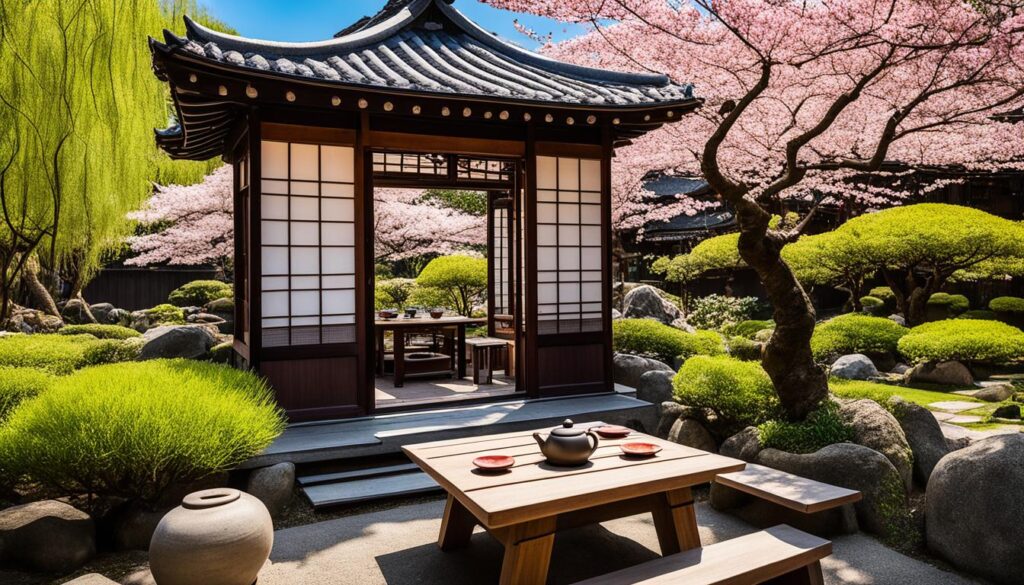
By incorporating elements of the Zen tea ceremony into your creative routine, you can cultivate a deeper connection with your art and tap into a wellspring of inspiration.
| Zen Art Forms | Description |
|---|---|
| Zen Paintings | Minimalistic black ink brush paintings that capture the essence of Zen through simple yet powerful strokes. |
| Zen Calligraphy | The art of writing characters with a brush, emphasizing the process and the state of mind as much as the final result. |
| Zen Tea Ceremony | An ancient ritual centered around the preparation and serving of tea, promoting mindfulness and reverence for the present moment. |
Buddhism’s Impact on Personal and Societal Harmony
Dive deeper into the teachings of Buddhism and explore its profound impact on personal and societal harmony. Buddhism offers insightful practices that can help individuals navigate the challenges of modern life with mindfulness and compassion.
By embracing the principles of Buddhism, you can cultivate inner peace, enhance your overall well-being, and contribute to the creation of a more harmonious society.
Mindfulness for Modern Challenges
Mindfulness is a fundamental aspect of Buddhist teachings, and it holds great relevance in our fast-paced and interconnected world. By practicing mindfulness, you can develop a higher level of self-awareness, allowing you to be fully present in the moment and engage with life’s challenges in a calm and balanced manner.
This heightened sense of awareness enables you to better understand your emotions, thoughts, and reactions, empowering you to respond to situations with clarity and wisdom rather than being governed by impulsive or automatic tendencies.
Mindfulness is a tool that can be applied in various aspects of life, from managing stress and anxiety to improving relationships and decision-making. By practicing mindfulness, you can navigate the modern challenges of our bustling world while maintaining a sense of inner tranquility.
Compassion as a Path to Harmony
In Buddhism, compassion plays a pivotal role in fostering personal and societal harmony. By cultivating compassion, you can develop a deep understanding and empathy for the suffering of yourself and others.
Compassion guides us to extend kindness, love, and support towards ourselves and those around us. By embodying compassion, we can create a ripple effect of positive change, bringing understanding, forgiveness, and healing to both individuals and communities.
Through acts of compassion, we can tackle the modern challenges of our world, such as inequality, social injustice, and environmental degradation. By embracing compassion, we contribute to the creation of a more equitable and harmonious society where everyone can thrive.
Unlock the transformative power of Buddhism’s teachings, incorporating mindfulness and compassion into your daily life. Discover the profound impact these practices can have on your personal well-being and their potential to create a more peaceful and harmonious world.
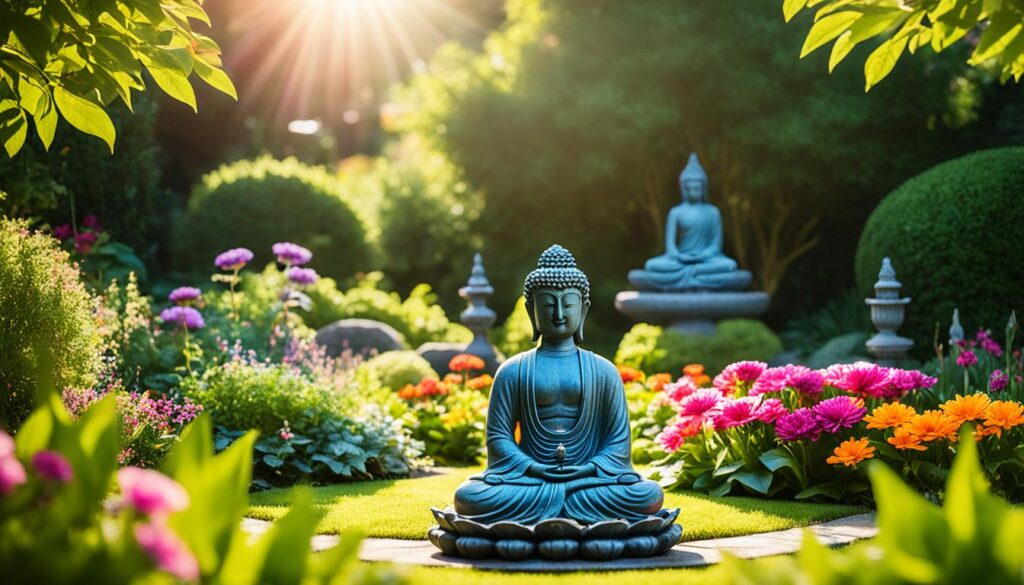
| Benefits of Buddhism in Modern Society | Key Insights from Buddhist Teachings |
|---|---|
| 1. Enhanced mental well-being through mindfulness practices | 1. Impermanence: Embracing change as an inevitable part of life |
| 2. Increased empathy and understanding through compassion meditation | 2. Non-attachment: Liberating oneself from clinging to material possessions and desires |
| 3. Improved interpersonal relationships through mindful communication | 3. Interconnectedness: Recognizing the interdependence of all beings |
| 4. Greater resilience and adaptability in the face of life’s challenges | 4. Right Livelihood: Engaging in ethical and fulfilling work |
Conclusion
In conclusion, creating a Buddha drawing easy can be a deeply rewarding and transformative experience. With our step-by-step guide and helpful tips, anyone can unlock their creativity and embrace the Zen-like qualities of Buddhist art. Whether you’re a beginner or a seasoned artist, exploring the world of Buddha sketching can bring a sense of peace and tranquility to your artistic journey.
By following our simple techniques for effortless Buddha sketching and finding inspiration in Zen art, you can capture the serenity and wisdom of Buddha in your artwork. Embrace the teachings of Buddhism and incorporate mindfulness and compassion into your creative practice. Let your imagination soar as you create your own masterpiece, inspired by the enlightened mind.
So pick up a pencil, let the strokes flow, and as you draw, feel the calmness and inner peace wash over you. Discover the meditative power of creating Buddha art and allow it to awaken your artistic soul. Begin your artistic journey today and discover the transformative potential of creating a simple and easy Buddha drawing.
FAQ
How do I draw a simple Buddha sketch?
Start by sketching the outline of a seated Buddha figure, capturing the posture and proportions. Then, add facial features such as the peaceful expression, closed eyes, and elongated earlobes. Next, focus on the robe and accessories, paying attention to the intricate details. Finally, bring your drawing to life with shading and highlights, creating depth and dimension.
What techniques can I use for effortless Buddha sketching?
Start by practicing basic shapes and proportions to get a feel for Buddha’s iconic silhouette. Then, experiment with different line weights and strokes to add depth and dimension to your sketches. Explore the use of shading and hatching techniques to create texture and contrast.
How can I find inspiration in Zen art for my Buddha drawings?
Zen art, including paintings, calligraphy, and tea ceremony objects, express the enlightened mind and serve as objects of meditation. Explore the elegant simplicity of black ink on white paper or silk, capturing the essence of enlightenment in just a few brushstrokes. Embrace the teachings of Buddha by incorporating Zen art into your creative practice, fostering inner peace and happiness.
What impact does Buddhism have on personal and societal harmony?
Buddhism offers valuable insights for navigating modern challenges through practices such as mindfulness and compassion. Learn how these teachings can help cultivate inner peace, enhance well-being, and create a more harmonious society. Discover the relevance of Buddhism in our fast-paced and interconnected world, and unlock the transformative power of its teachings.

